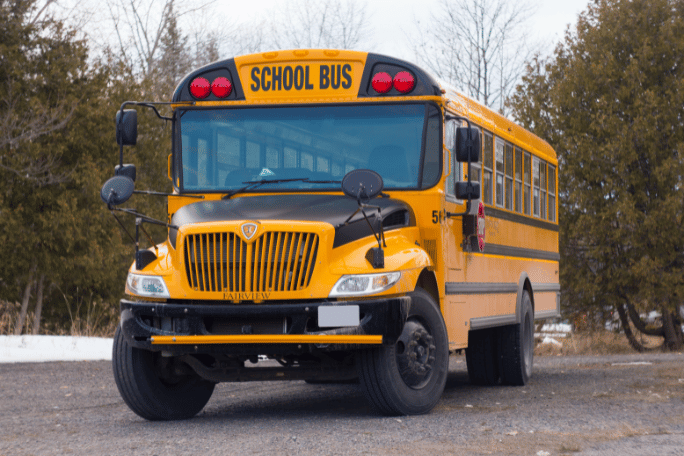Lesson summary
In this activity students undertake an audit of transport at their school. Students look at student and staff transport use, specifically types of transport used and distances travelled. Students will also look at the relationship between petrol consumption and greenhouse gas emissions produced, and will understand that school-owned vehicles also contribute to the energy used and emissions produced by their school. Finally, students design and execute a communication plan for sharing their data with the rest of the school.
Learning intentions:
Students will...
- understand that there a range of different transport types for commuting to school and a range of distances travelled.
- recognise the relationship between petrol consumption and greenhouse gas emissions produced.
- Students understand that school-owned vehicles also contribute to the energy used and emissions produced by their school.
- understand that the transport involved with excursions/camps/field trips also contribute to the energy used and emissions produced by their school.
Lesson guides and printables
Curriculum links
Select your curriculum from the options below.
Lesson details
Curriculum mapping
Australian Curriculum content descriptions:
Year 7 Geography:
- Collect, select and record relevant geographical data and information, using ethical protocols, from appropriate primary and secondary sources (ACHGS048)
- Present findings, arguments and ideas in a range of communication forms selected to suit a particular audience and purpose; using geographical terminology and digital technologies as appropriate (ACHGS053)
- Reflect on their learning to propose individual and collective action in response to a contemporary geographical challenge, taking account of environmental, economic and social considerations, and predict the expected outcomes of their proposal (ACHGS054)
Year 7 Mathematics:
- Find percentages of quantities and express one quantity as a percentage of another, with and without digital technologies. (ACMNA158)
Year 8 Geography:
- Collect, select and record relevant geographical data and information, using ethical protocols, from appropriate primary and secondary sources (ACHGS056)
- Present findings, arguments and ideas in a range of communication forms selected to suit a particular audience and purpose, using geographical terminology and digital technologies as appropriate (ACHGS061)
- Reflect on their learning to propose individual and collective action in response to a contemporary geographical challenge, taking account of environmental, economic and social considerations, and predict the expected outcomes of their proposal (ACHGS062)
Year 9 Geography:
- Collect, select, record and organise relevant geographical data and information, using ethical protocols, from a range of appropriate primary and secondary sources (ACHGS064)
- Present findings, arguments and explanations in a range of appropriate communication forms, selected for their effectiveness and to suit audience and purpose; using relevant geographical terminology, and digital technologies as appropriate (ACHGS070)
Year 10 Geography:
- Collect, select, record and organise relevant data and geographical information, using ethical protocols, from a range of appropriate primary and secondary sources (ACHGS073)
- Present findings, arguments and explanations in a range of appropriate communication forms selected for their effectiveness and to suit audience and purpose, using relevant geographical terminology and digital technologies as appropriate (ACHGS079)
- Reflect on and evaluate the findings of the inquiry to propose individual and collective action in response to a contemporary geographical challenge, taking account of environmental, economic and social considerations; and explain the predicted outcomes and consequences of their proposal (ACHGS080)
Cross curriculum priorities:
Sustainability – OI.3 – Sustainable patterns of living rely on the interdependence of healthy social, economic and ecological systems. OI.5 – World views are formed by experiences at personal, local, national and global levels, and are linked to individual and community actions for sustainability.
OI.9 – Sustainable futures result from actions designed to preserve and/or restore the quality and uniqueness of environments.
General capabilities
Critical and creative thinking, Numeracy, Ethical understanding.
Syllabus Outcomes: GE4-7, GE4-8, GE5-7, GE5-8.
Connecting lessons: Energy audit – must be completed as a compulsory action.
Resources required
- Internet access
- Student worksheet
- Access to information about school-owned vehicle petrol consumption.
Additional info
This lesson can be used when working on the Energy Module of ResourceSmart AuSSI Vic Certification.


Welcome back!
Don't have an account yet?
Log in with:
Create your free Cool.org account.
Many of our resources are free, with an option to upgrade to Cool+ for premium content.
Already have an account?
Sign up with:
By signing up you accept Cool.org's Terms and Conditions(Opens in new tab) and Privacy Policy(Opens in new tab).